My husband Joel has been making this awesome homemade natural fertilizer for our garden using comfrey, and its been working amazingly well! It’s super easy, too, especially if you have comfrey growing in your garden already. Basically, it’s a simple comfrey tea, or infusion to be exact. Joel wrote this post for us today to tell us how he makes this comfrey tea for use in the garden as a homemade natural fertilizer!
Why Use Comfrey?
The comfrey plant is a dynamic accumulator, which means that its deep roots are able to bring up nutrients and minerals from the soil and concentrate them in its leaves. When the leaves are steeped in water, the nutrients leach out into the water and make a natural, inexpensive homemade natural fertilizer for any plant. So why not make use of something already growing in your garden to help everything else grow!
How to Make Comfrey Tea
Here’s how to make comfrey tea. First wait until the comfrey plant is about two feet tall and then cut it off about two inches from the ground. Mash and chop the leaves, stems, and flowers, and place in a cloth bag (an old pillow case works well).
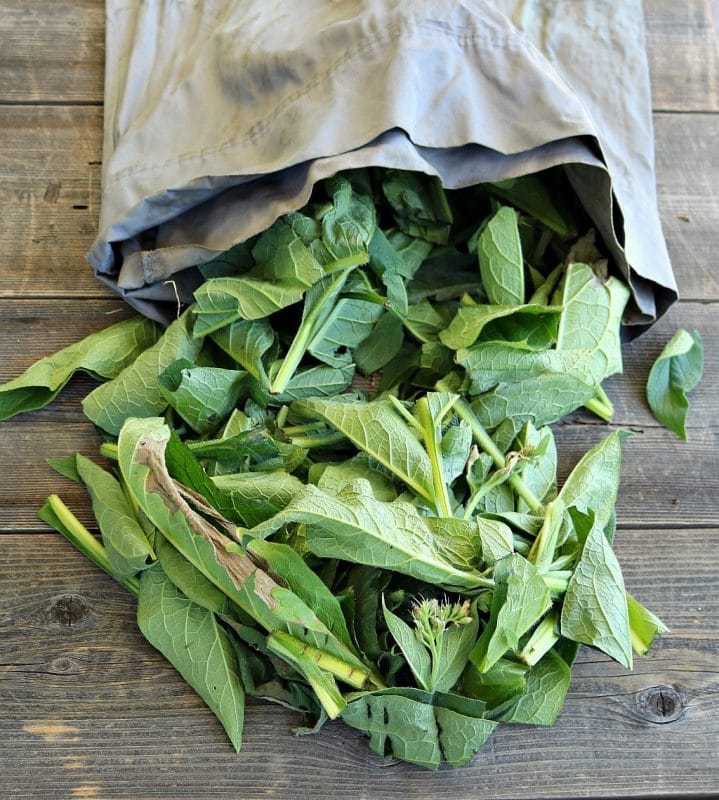
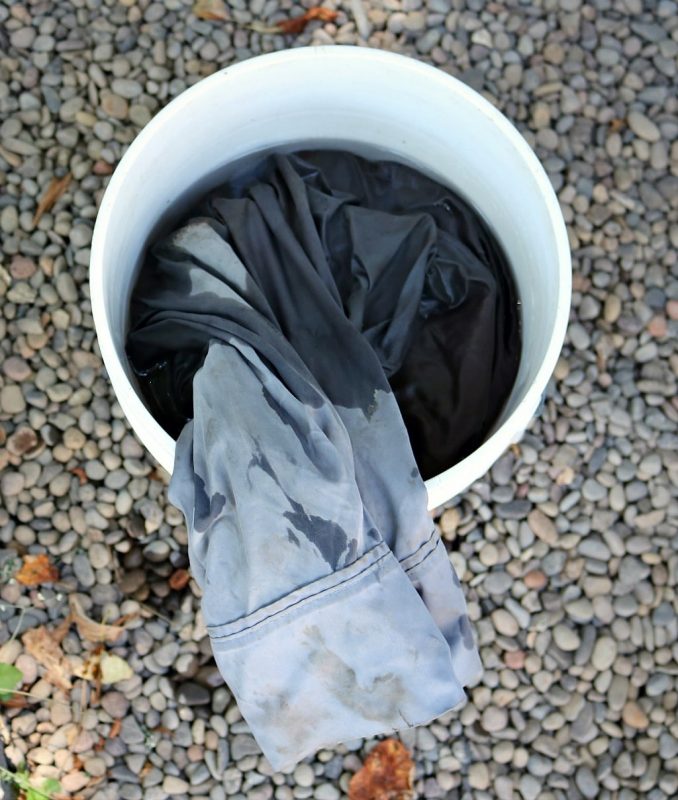
How to Use Comfrey Tea in the Garden
Dilute the comfrey tea with plain water at a ratio of at least 3:1, and up to 10:1, and then use diluted tea to water plants in your garden. You can reuse the bag of chopped up comfrey for a second batch if you’d like, but it will be weaker, so just dilute it less.
It’s that simple! With just a little effort and time, you can make your own free organic homemade natural fertilizer, and then just watch the plants grow!
Comfrey leaves can also be made into restorative salves, like comfrey salve or an herbal diaper rash salve, that skin loves!

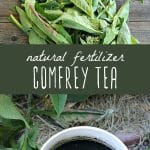
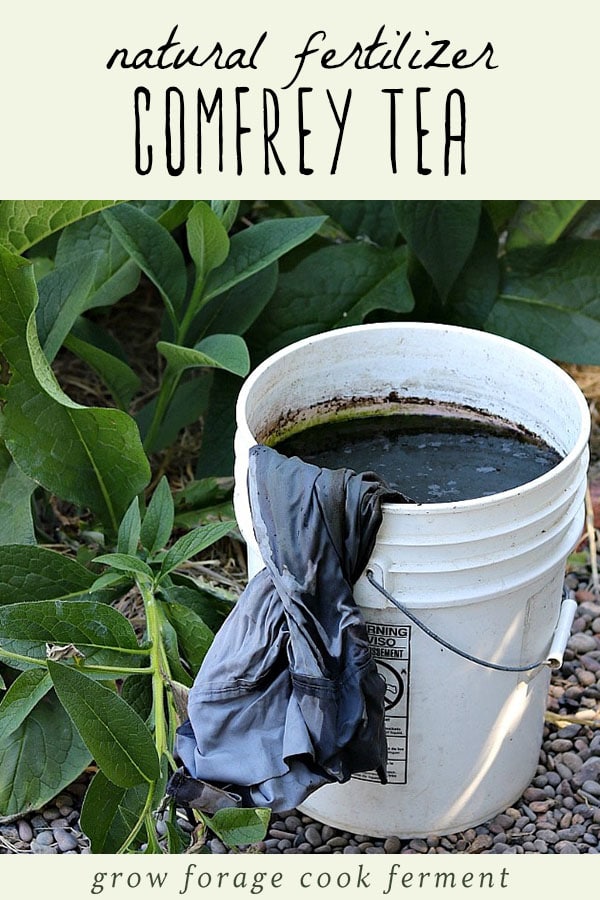
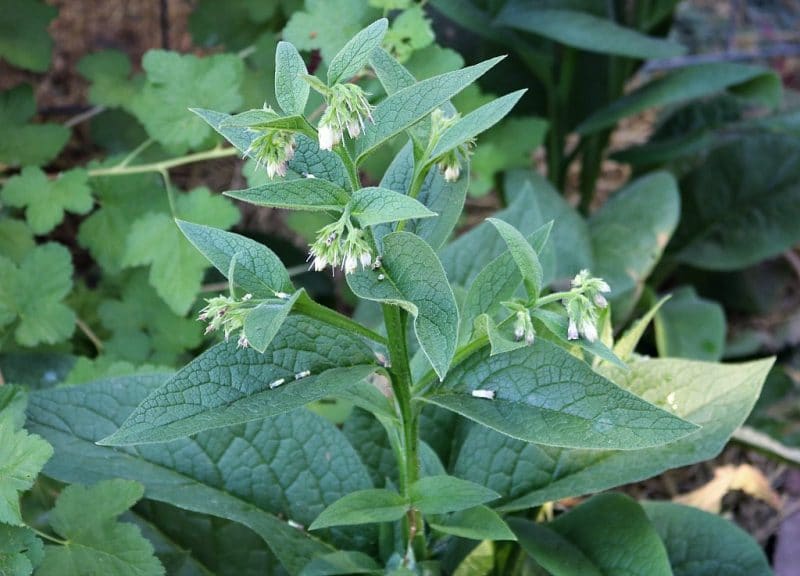
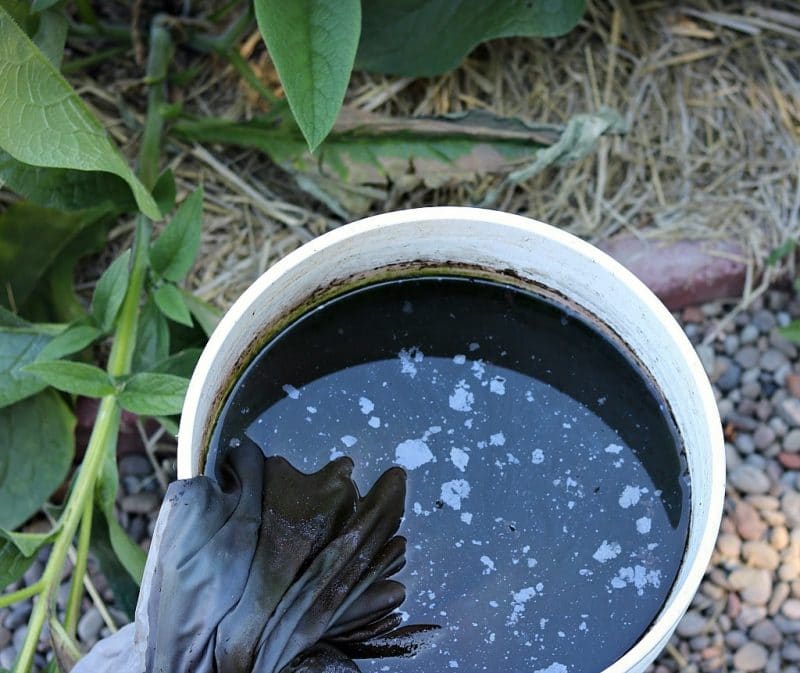

I did some research on the concept of dynamic accumulators and discovered that comfrey leaves are average in their concentration of nutrients. I prefer to chop and drop as mulch on my beds and toss leaves into my compost.
I put it in my blueberry guild but am wondering if it will take over the guild leaving me without blueberries.
Hi Bonnie, comfrey can definitely take over if left unchecked, so I would be sure to chop and drop it so that it doesn’t get out of control. It has a lot of uses of its own!
Hi! I followed the directions and there are a few things happening:
1) there’s mold on the surface!
2) it stinks like pig manure that’s rotten
3) I’ve kept it covered with a lid because Of the smell. Should I leave it uncovered?
Thanks!
Kathy
Hello, I loved this post. I wondered how often I should use the comfrey mix. Every time I water the plants? Or less often.
I have been adding comfrey to a 32 gallon bucket of water and it is steeping and it doesn’t smell that great but i have it away from the main house. My question is how much of the diluted comfrey tea could i add to my newly planted apples. I have a young orchard and about 5 that are over 8 years old, the rest are 2-3 year old trees. I wanted to give them a boost after a very long, hot summer. Any suggestions. Thanks~
On the New Moon the diluting will work at most any ratio. I would go for colour of water and keep it consistant.
Let’s agree that by virtue of its deep taproot and unique chemistry comfrey may contain many minerals and other nutrients valuable to plants. I don’t get why the same nutrients couldn’t be made available by composting with your other compostable materials or even chop-and-drop (composting in place) with a lot less effort and without the smelly anaerobic digestion and spraying.
I use comfrey to make compost and tea because it is a great recycler of phosphorous which cannot be said of every plant that gets composted. The NPK ratio of comfrey compost is 1.8-5.5-3.0.
Very much enjoyed the comments and of course the article. Thank you all for sharing.
I’m not so sure this is a great idea. Research has proven that hepatotoxic pyrrolizidine alkaloids can be transferred to other plants.hopefully they are broken down in the process of making the tea.
Oh wow – where did you see this?
do you steep it in hot water or cold?
The sun heats it.
Cold water is fine!
Would that 3:1 be three parts water to one part tea?
I’m wondering if borage would be comparable…
I have heard that is !
3 parts of water to one of comfrey
I found some in my back yard! Happy dance for my garden some call it the back yard! thank you.
We purchased comfrey roots online a few years ago and planted them along our fence. We use the leaves for poultices (just toss them into a blender with a little water and a spoon of honey). We also cut them back in later fall/early winter, chop them up and turn them into our compost and our raised beds. Now that I’ve read about using comfrey root, my question is: do I dig up and separate the plant, then cut up part of the root, and replant the remaining plant again? Seems a shame to sacrifice an entire plant……. Thanks
Comfrey is very hardy and spreads very readily, it is even considered to be an invasive by some. I don’t think you will have any trouble keeping it on your property.
The more you dig comfrey root, the more it spreads. Trust me, you will never kill the entire plant by digging the roots. Every tiny piece you leave behind will start. New plant.
we live in a flat…we started to wonder if we were the smell..great stuff
Absolutely love your site and tell your husband his post earned you a subscriber!
Do you think this would work on human worts
Where can I get comfrey root or seeds?
Look online check for hybrid varieties that dont spread as readily. Comfrey can be invasive and once it is established very hard to get rid of. I have a varitiey ( i think it is Russia comfrey) cut ot back three times a year very hearty but stays put well. I only cut half the plant because bees love it. Blooms all summer.
There are many places where you can order them online, this one looks like a good source: http://www.coescomfrey.com/order.html
I got mine at Bakers Creek Heirloom Rare Seeds. I have also bought nettle and purslane from them, along with other garden seeds.
https://www.rareseeds.com/search/?keyword=comfrey
In Ireland, we had big rain buckets and I was taught to layer comfrey with nettles up to the top and fill with water. We used the fertilizer on tomatoes
I can vouch for comfrey. I wouldn’t have believed it if I hadn’t seen it with my own eyes. This has been a good 35-40 years ago, but I remember it like it was yesterday. Our neighbors had a beautiful old black quarter horse, that was very gentle. My folks wanted to buy her from the neighbors, for some of my younger siblings to ride, and they eventually did, but she came with a chronic problem. She had gotten her back fetlock/ankle (near the hoof) caught in some barbed wire when she was a young horse, and it had gotten cut up, and she lived with a grey/white growth on the wound, about the size of a softball. It was hard, almost like a hoof material. It may have been growing off of the bone, I don’t know. It would eventually get caught on something and break off every few years, and and start bleeding, and she would have an open wound that had to be cared for. They had tried all kinds of different medications and cures, several from the veterinarian. It would eventually stop bleeding, and would start getting that grey/white hard material over it to seal it closed, which was good, but it would continue to grow and eventually would build up again and the cycle would start over.
After my folks bought Lady, as she was named, they dealt with the same problem, initially. Then a friend my father’s, who was another person who loved animals, was visiting, and offered some of his extensive experience with herbal medicines. He said, “What you need to do, is treat that with comfrey root.” He went on to harvest some of his comfrey root, and bring it to the house, all ground up in a meat grinder into a poltice. He also brought some bare roots for my folks to plant for themselves. He gave them a big bag of the root to be used in the treatment of Lady, and advised them to keep it refrigerated and grind it themselves on demand to plaster that poltice on and cover it with a cloth bandage, and change as necessary. My folks took his advice, and I don’t recall exactly how long it took–I don’t think it was much over a month, if that–it may have been, but that wound healed up fast, and healed up well, and covered with skin and hair again, and they never had another problem with that wound again!
I was just down to my folks yesterday, and although I have thought about get some for myself to plant, many times over the years, I just happened to ask my dad for some of his comfrey root, because after 40 years, he still has it growing down there, although I doubt that he has used it since. It is almost like a memorial to Lady, may she rest in peace.
What a wonderful story. Thank you So much for sharing. Inspiring me to make sure I grow some comfrey. Blessings to you all & to the memory of Lady
Hallelujah!!! I have huge comfrey production & this is answer to prayer!! :)
~Tess
Hi,
I am very very lucky comfrey plants comes every year in my garden. Also make the tea as you said in your article and put on plants. I enjoyed read the details on the plants.
almas
Comfrey tea is also a great healer of wounds and skin abrasions. My midwife instructed me to make an infusion and keep it, covered, in the fridge after the baby came. I kept gauze squares soaking in it and each time I changed my pad, I laid one on top to be next to the skin. Very healing and soothing! Likewise, she instructed me to add comfrey tea to the bath water and take the baby into the bath with me. I did this with both of my newborns daily. They loved it, and their umbilical stumps were completely healed in 6 days, with no need for alcohol swabbing. Comfrey is also known as “bone knit”, and the homeopathic remedy made from it causes broken bones to begin healing so fast that it is recommended that you wait until after the break has been set by a doctor before you begin taking it.
Thanks for sharing the other great use for this wonderful herb! I’ll be growing extra for use as fertilizer now!
Good idea…great post!